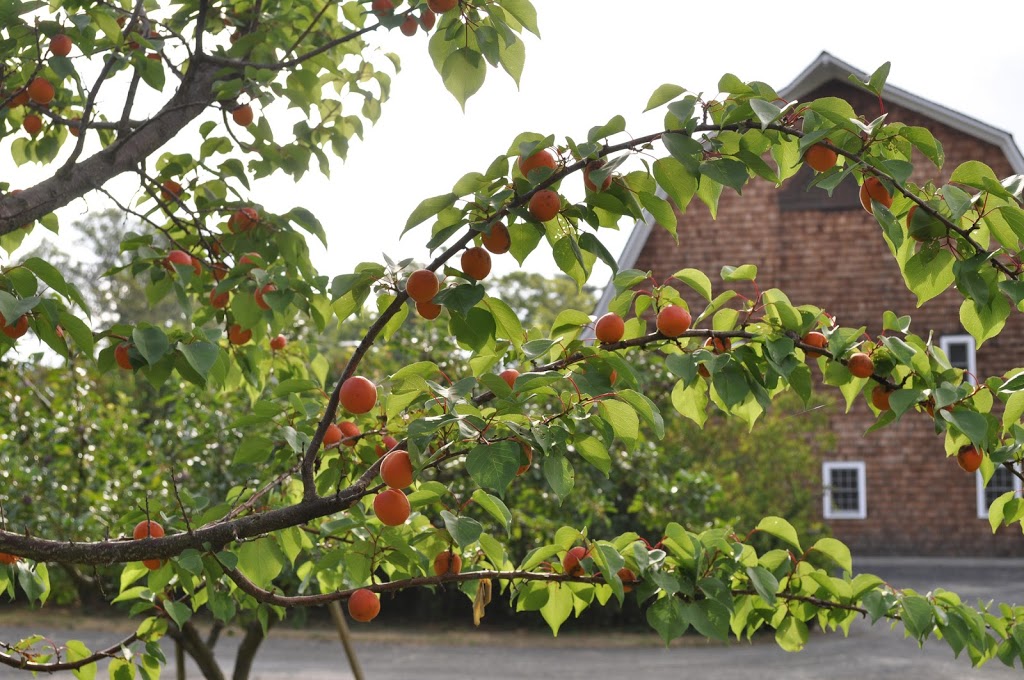Nuts for Fruits
What a fool I am; I can’t even follow my own advice! A couple of days ago I planted an apricot tree that I had ordered a few weeks previously. All of which compounds my foolishness because I had plenty of time to ponder the purchase, even cancel it if I came to my senses before it’s arrival mail-order.
Planting an apricot tree may not seem foolish to you. But it is, as I’ve advised many people. The reason is that here in the northeast, perhaps even east of the Rocky Mountains, an apricot is unlikely to bear fruit. The plant hails from regions where winters are steadily cold and spring temperatures creep steadily upward. Over most of continental U.S., winter temperatures fluctuate wildly up and down, predisposing the plants to
 |
| My apricot hope for the future. |
disease such as ominous-sounding, and truly debilitating, valsa canker. Trees typically die either quickly or slowly.
If only that were all . . . Apricot blossoms open at the first hint of spring warmth. The pinkish buds unfolding against the brownish red stems are a beautiful and welcome sight on the heels of winter, but those early blooms could — usually are — knocked out by subsequent frosty weather. Damaging, late frosts are least likely to occur near large bodies of water, such as the ocean and Great Lakes. Late frosts are most likely to occur in low-lying regions into which cold air sinks on still, spring nights; that would be here on my farmden in the valley of the Wallkill River.
If only that were all . . . Even if the trees stay alive through winters and their blossoms escape spring frosts, the fruits themselves are the target of a number of insects and diseases. Plum curculio, oriental fruit moth, brown rot, black knot . . . the list goes on of afflictions that can reduce the crop to zero. Oh, and did I mention squirrels. My father had a tree that every Father’s Day was stripped of every one of its small, green developing fruits by squirrels.
—————————————————-
Did you ever taste a perfectly ripened apricot, one that’s soft and ready to travel no more than arm’s length from the branch to your mouth? I have (when I worked at the USDA Fruit Laboratory and at a friend’s orchard; he has a good site). Perfectly ripe, the fruit tastes nothing like a lemon, as market apricots usually do, but has just a hint of tartness to offset its rich, sweet flavor. For that, I planted the tree.
 |
| My friend Lev with his apricot trees |
I wrote that “apricot is unlikely to bear fruit.” “Unlikely” does not mean “never.” A crop of apricots even one year out of — say — every five years will justify, for me, the space and trouble the tree will entail.
I was smart in a couple of ways with my apricot tree. I bought it from a nursery that specializes in fruit trees (www.cumminsnursery.com) and I planted in full sun in well-drained, moderately fertile soil. And the variety is Jerseycot, one of the varieties most resistant to some of the pests and the vagaries of our winter and spring weather.
——————————————————
More foolishness: I just received a confirmation for a nursery order, soon to arrive, that includes a camellia bush. Let me explain. I love living in the northeast but do bemoan the inability to grow certain plants not hardy here, among them southern magnolia, citrus, and camellia. I’ve been tempted to plant the hardiest southern magnolia, Edith Bogue, but
 |
| My “citrus” plantation. |
restrain myself realizing that the plant might survive but would never become a majestic specimen the tree is meant to be. Citrus? I resign myself to growing some citrus in pots, indoors in winter and outdoors in summer.
The last few years have seen the development of hardier camellias. Long Island Pink is one of the hardiest, with compact stature, glossy evergreen leaves, and single pink flowers in autumn. Still, it’s not really hardy here. I’ll plant it in the partial shade near the northeast corner of my home, protect it through winter its first few years as it develops cold-hardiness, and perhaps my foolishness will pay off.


